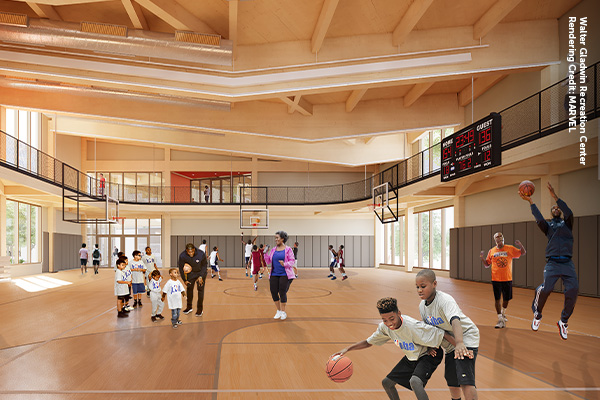HIGHLIGHTS
PROGRAM UPDATES
The AWC Secures $6 Million EPA Grant and Launches 2024 LCA Survey to Strengthen Industry’s Environmental Data Campaign Showcases Prefab Light-Frame Construction for Multifamily Developers WoodWorks Tours Often a Tipping Point for Architects and DevelopersINDUSTRY RESOUCES
Virginia Tech's Monthly Housing ReportProgram Updates
The AWC Secures $6 Million EPA Grant and Launches 2024 LCA Survey to Strengthen Industry’s Environmental Data
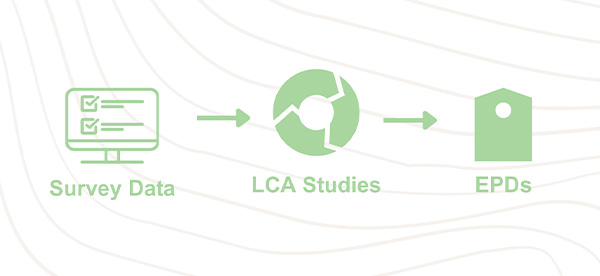
The AWC is continuing its efforts to strengthen the wood product industry’s sustainability data collection efforts through the launch of its yearly Life Cycle Survey and a recent grant from the Environmental Protection Agency. Last month, the AWC was notified that it had been selected for a $6 million grant from the EPA that will further support the industry’s transparency efforts.
The EPA grant, which was funded through the Inflation Reduction Act (IRA), will help fund continued development of Environmental Product Declarations (EPDs) and Product Category Rules (PCRs). With a focus on reducing embodied carbon in the built environment, the grant will fund a variety of projects over a five-year period including developing an EPD generator, a funding mechanism to support mills as they develop their own EPDs, and programs to help educate AEC firms on whole building life cycle assessments.
The EPA grant will join other AWC efforts, like the Life Cycle Survey, that work to ensure the sustainability story of wood products is data-backed and meets the needs of the market. Providing precise carbon impact data is necessary to be credible with the design community and is becoming the industry standard for material specification.
This year’s Life Cycle Survey launched August 1, and for the first time, the survey is open to non-AWC member companies and mills. This expansion is funded by the Wood Innovations Grant the AWC received last year and will further strengthen the survey’s data and subsequent life cycle assessments (LCAs) and EPDs produced.
Last year’s data is currently being used to develop regional EPDs for a range of structural wood products, including softwood lumber, softwood plywood, OSB, LVL, and glulam. These geographically specific EPDs are helping meet the growing market and regulatory demands for transparent environmental performance reports.
We encourage all U.S. mills to take part in this year’s survey as your responses directly impact and strengthen our industry’s data and further demonstrate that U.S. wood products are truly the leader in environmentally friendly, low-carbon building materials. The data from the survey will continue to demonstrate the industry’s commitment to transparent data collection and set the standard for EPD transparency.
The Life Cycle Survey is open to all SLB investors. If you would like to participate, contact Anna Ostrander at aostrander@awc.org.
Campaign Showcases Prefab Light-Frame Construction for Multifamily Developers
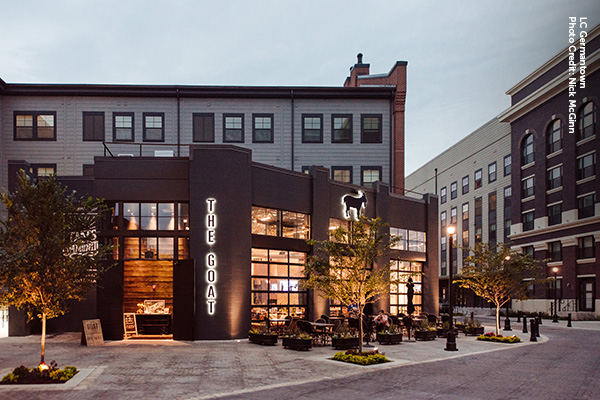
A recent Think Wood project profile put the spotlight on a construction type that doesn’t typically get a lot of buzz in traditional multifamily industry trade media: mid-rise light-frame construction. Lifestyle Communities’ LC Germantown in Nashville, Tennessee, is a 4.5-acre, 450,000-square-foot mixed-use development with a mix of four- to six-story buildings. The developer hoped to create an environment that would attract renters with a walkable streetscape that nods to historic neighborhoods and creates an unmistakably urban feel. The community’s achievement of that goal earned it recognition as the National Association of Home Builders “Community of the Year” in its 2024 Best in American Living Awards.
Think Wood’s unique angle on this story showed how offsite prefabrication and light-frame construction were critical to a speedy and affordable construction process — and didn’t require the developer to sacrifice the unique character it hoped to achieve.
“With LC Germantown, we wanted to take a more novel approach, dividing the development into different buildings, scales, and configurations, giving it an animated, civic and heritage-like presence,” says Mike Sullivan, principal designer at Memphis-based LRK, which designed the community. “We likely saved months with this simplified, prefab light-frame method. Everything happens quickly when all the materials are right there ready to go.”
WoodWorks Tours Often a Tipping Point for Architects and Developers
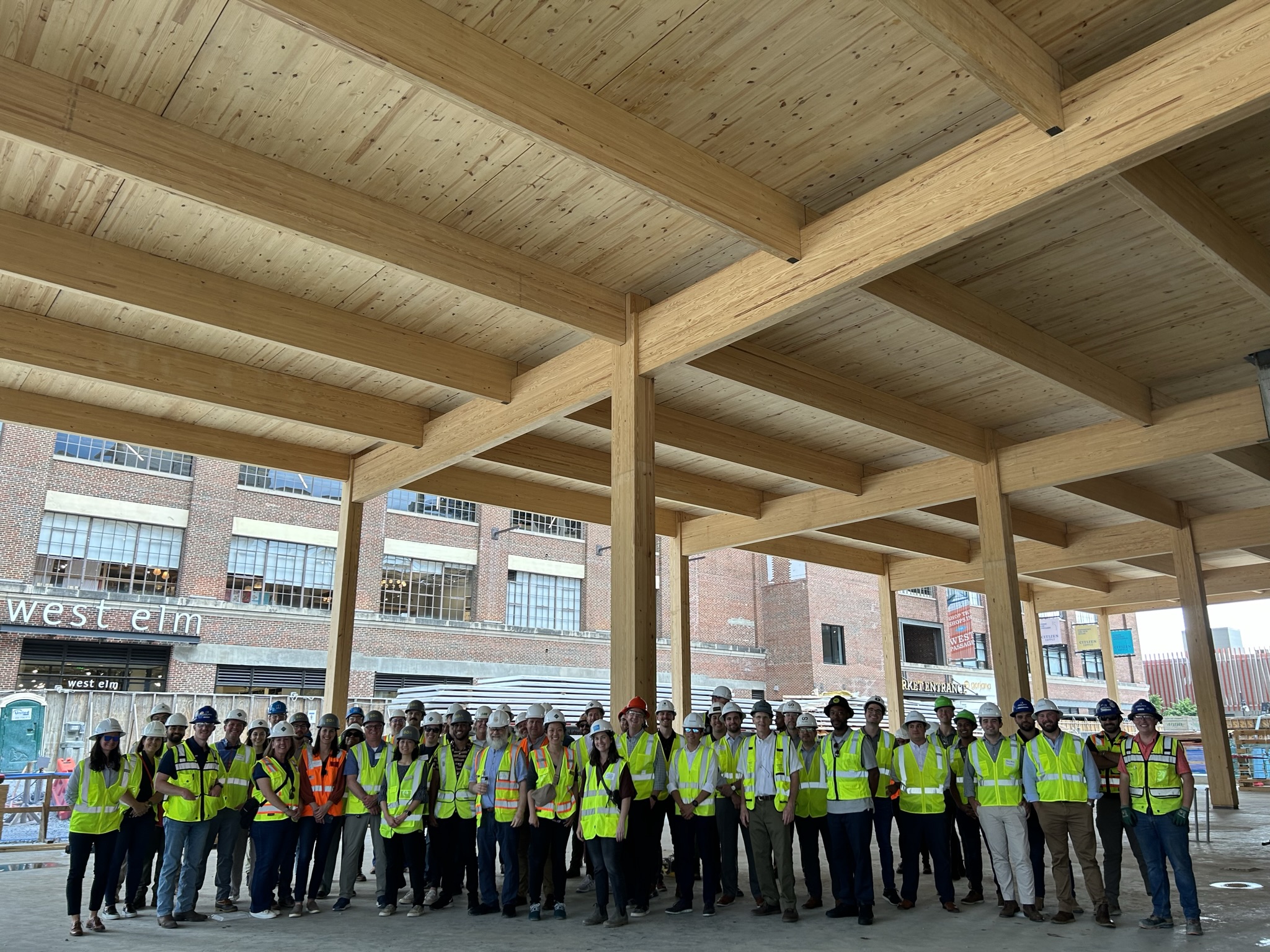
WoodWorks building tours continue to be a tipping point, generating project conversion leads by encouraging developers and architecture, engineering, and construction professionals to pursue their own projects — and request the support they need to be successful. Recent examples include:
- Texas – After a WoodWorks tour of an office project, an architect sought WoodWorks’ support for their own six-story mass timber office.
- California – Following a tour of a multifamily project, two architects requested assistance for an eight-story residential development. It is their first mass timber project.
- Maryland – A tour of a student center led an architect to request assistance for a 180,000-square-foot K-8 school. The project is Type II-B, which allows mass timber in select locations. WoodWorks is helping them pursue wood for the roof, cafeterias, and gymnasiums.
- Washington – After meeting WoodWorks on a third-party tour, a general contractor downloaded the Mass Timber Construction Manual and requested a lunch and learn. Their company typically works in steel, but recently won a mass timber bid. The GC later said the presentation was “like taking a master-level class in mass timber.”
Spotlight
Developer Makes the Case that Panelized Prefab Wood Systems Can Help “Fundamentally Broken” Housing Model
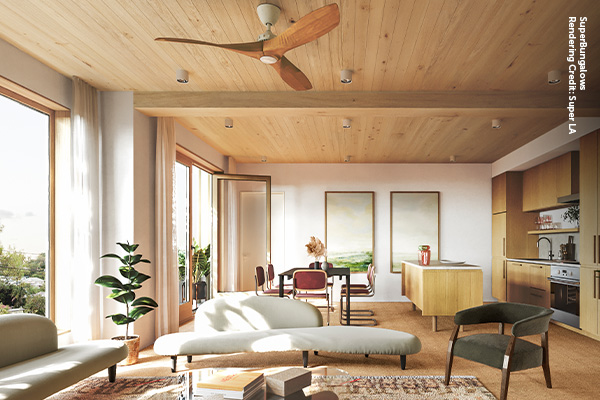
Developer Aaron van Schaik recognizes that the housing shortage afflicting cities across the country and the globe is a complex problem. “Unless we make a radical change in the way we design and deliver housing, we will continue to chase and fail to meet housing goals,” says the founder of SuperLA, a design and development startup, in a Q&A with Dwell. “The current housing supply model is fundamentally broken.”
SuperLA’s approach to this problem is a design with panelized, prefabricated wood construction, a solution that the SLB and its funded programs are supporting for both light-frame and mass timber systems. SuperLA is using both light-frame and CLT, which it selected for environmental and construction speed reasons, as well as the material’s ability to connect residents with nature.
A Think Wood profile of SuperLA’s SuperBungalows project takes a deeper look at how the firm’s approach to wood construction is evolving with each project. After its first project was constructed with light-frame wood walls built on site and panelized CLT floors and roofs, a second property will be assembled with light-frame prefab walls and five-ply CLT floors and roofs—all arriving using just-in-time sequencing and expected to go up in just four weeks.
Despite the current slowdown throughout commercial real estate, strong fundamentals for the housing market mean that new investment in medium- and high-density housing is inevitable. Through marketing and education, direct project support, and involvement in codes and standards development, the SLB and its funded programs are working to expand market share for wood construction — work that will drive new growth for lumber demand.
Industry Resources
Virginia Tech's Monthly Housing Report
This monthly housing commentary report is a free service of Virginia Tech and is intended to help one gauge future business activity in the U.S. housing market.
June 2024 Reports (released in August 2024)
Part A: June Housing Commentary
Part B: June Economic Conditions


